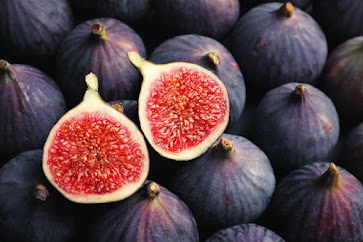DAISY DRY FIGS:

A dry fig is a type of fig that has been allowed to fully mature and dry on the tree or after being picked. Dry figs are sweet and chewy with a dense texture, and they are typically used in baked goods, trail mixes, and snack bars.



ARE DRY FIGS SAFE TO EAT?
Store Properly: Store dried figs in an airtight container in a cool, dry place, away from direct sunlight. Proper storage can help prevent the growth of bacteria and other harmful microorganisms.
Dried figs are a safe and nutritious food, as long as they are stored and consumed properly. If you have any concerns or allergies, it's always best to consult with your healthcare provider before adding any new food to your diet.
WHAT HAPPENS IF YOU TAKE TOO MANY DRIED FIGS?
If you eat too many dried figs, you may experience some Digestive Issues such as abdominal pain, bloating, gas, and diarrhea. This is because dried figs contain a type of soluble fiber called fructose, which can be difficult for some people to digest in large amounts. Additionally, dried figs are also high in natural sugars, which can lead to an upset stomach, nausea, and other digestive symptoms if consumed in large quantities.
It's generally considered safe to eat a moderate amount of dried figs as part of a healthy diet, but it's always a good idea to listen to your body and pay attention to how certain foods affect you. If you experience any negative symptoms after eating dried figs, it may be best to cut back or avoid them in the future.
WHO SHOULD AVOID DRY FIGS:
There are Certain People Who May Need to Avoid or Limit Their Consumption of Dried Figs:
People with Fructose Intolerance: If you have a fructose intolerance, eating dried figs can cause digestive issues such as abdominal pain, bloating, gas, and diarrhea, as they contain a high amount of fructose.
People with High Blood Sugar: Dried figs are high in natural sugars and can cause a spike in blood sugar levels. If you have diabetes or are monitoring your blood sugar levels, it's best to eat dried figs in moderation.
People with Irritable Bowel Syndrome (IBS): For some people with IBS, dried figs can be irritating to the gut and trigger symptoms such as abdominal pain, bloating, and diarrhea.
People with a Latex Allergy: If you have a latex allergy, you may also be allergic to figs and other fruits from the Ficus genus. Eating dried figs can trigger a reaction in these individuals.
However, it's worth noting that most people can safely eat dried figs in moderation as part of a healthy diet. If you have any concerns about your personal health, it's always a good idea to consult with a doctor or dietitian.
DRY FIGS MEDICAL BENEFITS:
Some of the Medical Benefits of Dry Figs Include:
Digestive Health: Dry figs are high in fiber, which can help promote regular bowel movements and prevent constipation.

Blood Sugar Control: Dry figs have a low glycemic index, meaning they do not cause rapid spikes in blood sugar levels, making them a good option for people with diabetes.

Heart Health: Dry figs are a good source of potassium, which helps regulate blood pressure and reduces the risk of heart disease.

Antioxidant Properties: Dry figs contain antioxidants, which protect against cellular damage from free radicals.
Cancer Prevention: Some studies have found that compounds in figs may have anti-cancer properties, but more research is needed to confirm these findings.
It's important to note that while dry figs can be a healthy addition to a balanced diet, they are also high in natural sugars and should be consumed in moderation. If you have any medical conditions or concerns, it's always best to consult with your healthcare provider before making any significant changes to your diet.
TO PURCHASE:
WHATSAPP CATALOG: https://wa.me/c/919840800182
GOOGLE BUSSINESS PROFILE: Daisy Organic Online Store








Comments
Post a Comment